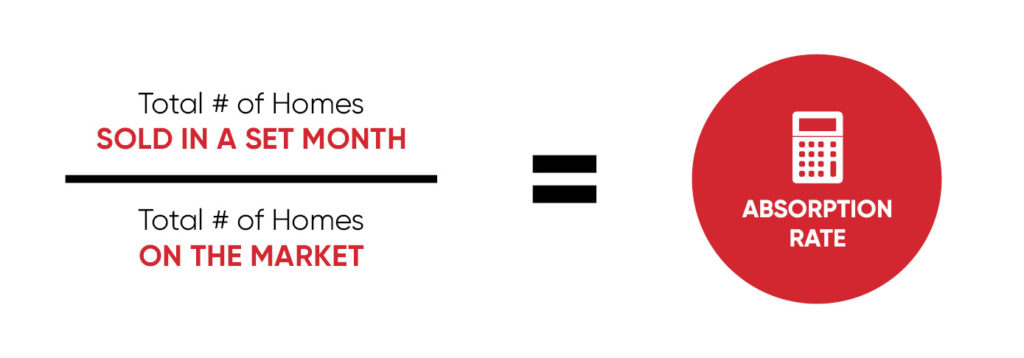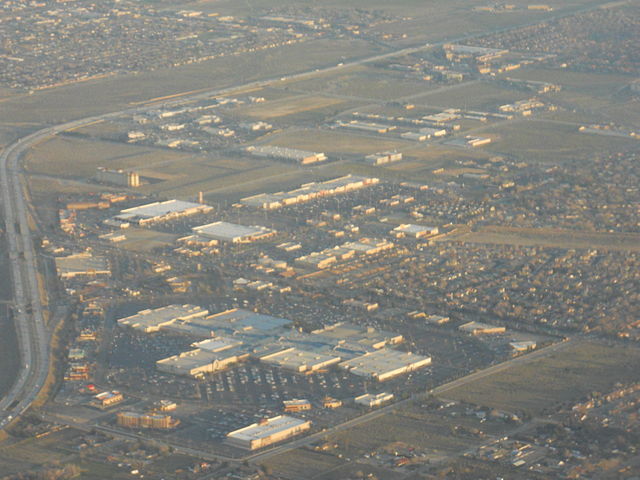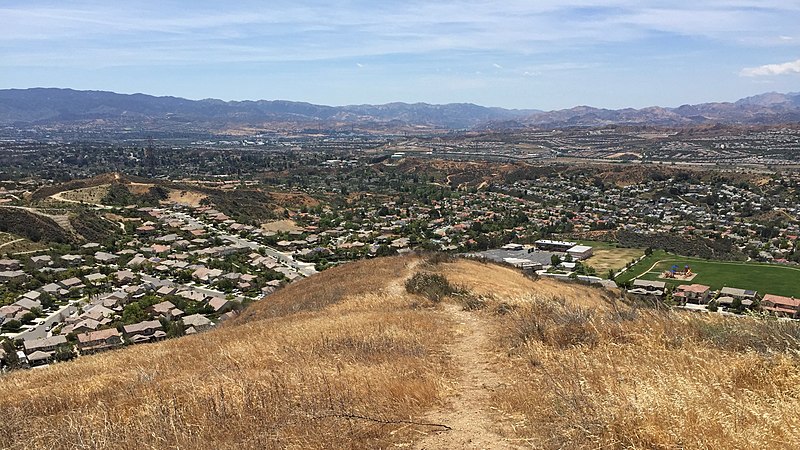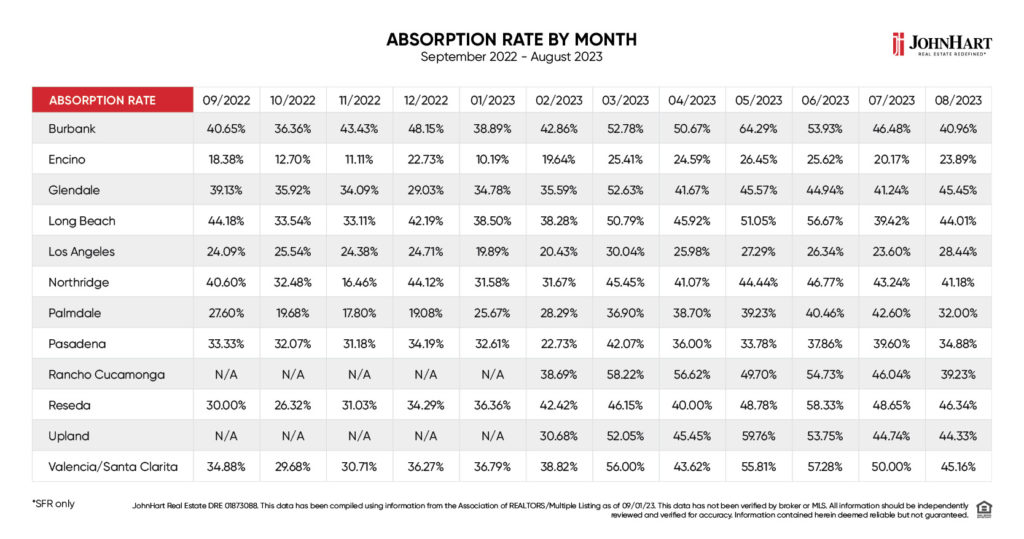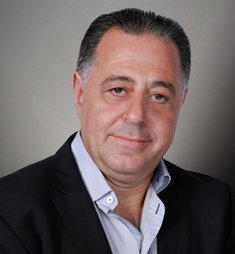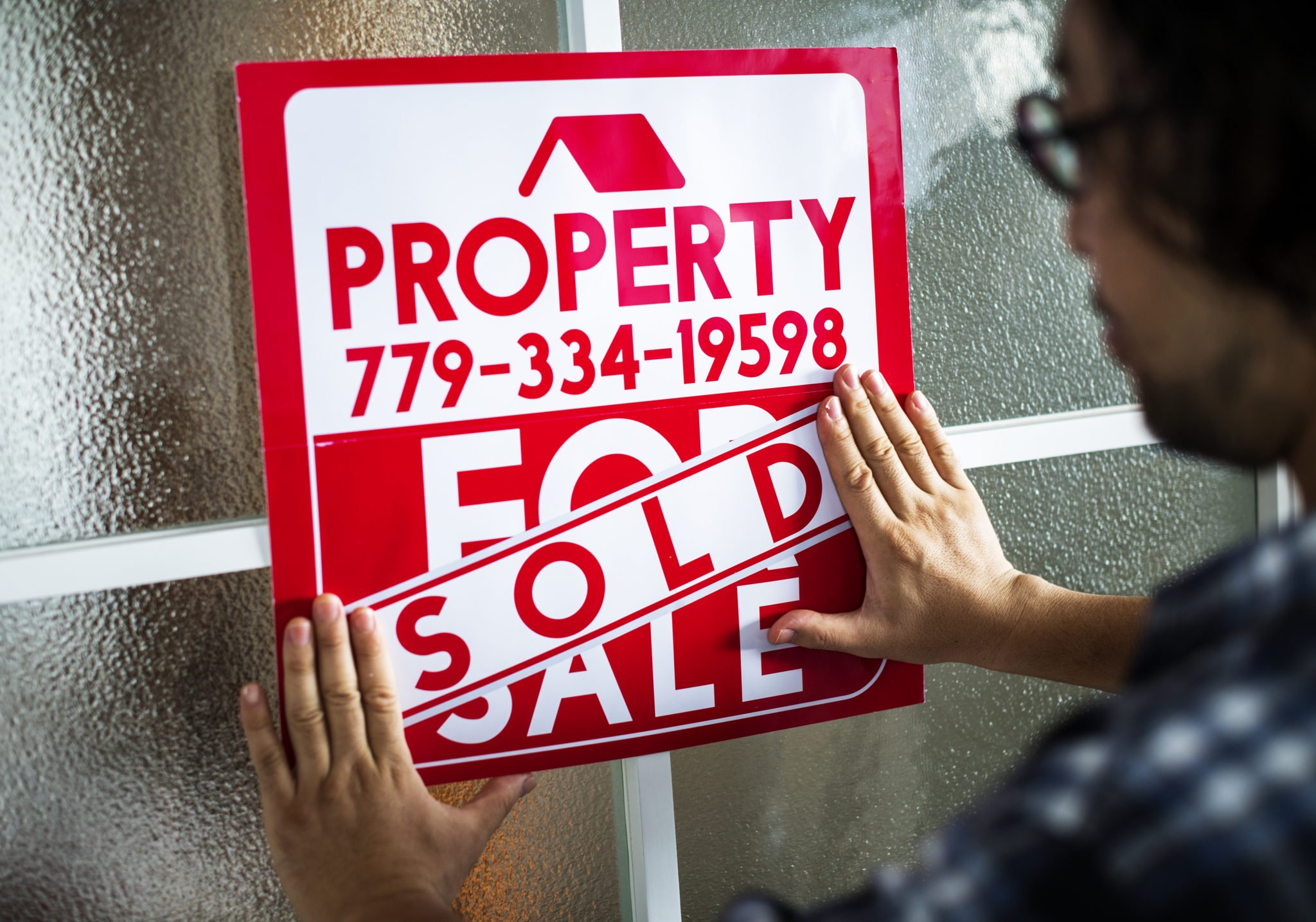
- calendar_month September 13, 2023
- folder Real Estate Updates
After a few months of drama, it seems the summer’s absorption rates are going into the fall with a whimper instead of a bang. No record highs for any neighborhoods. No lows either. Compared to previous months, the shifts in position were modest with the exception of one desert community. Can you guess which one? It’s also worth noting that this marks one full year of Absorption Rate Analysis! It was in August 2022 that we first started making these stats public. That means we’ll also be taking a look at where absorption rates are today compared to where they were a year ago. If this isn’t your first rodeo with us, go ahead and skip the FAQs. Otherwise, let’s answer the questions that are no doubt on your mind…
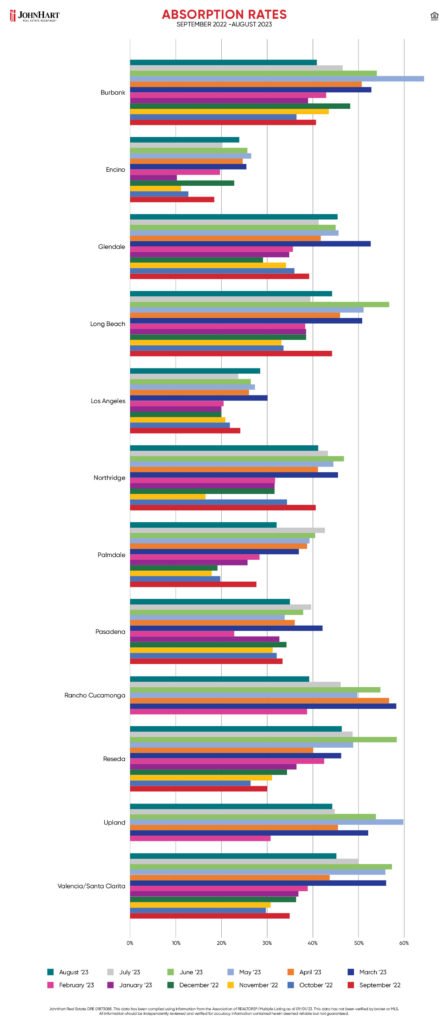
Absorption Rate FAQs
(1.) What is an absorption rate?
An absorption rate is a statistic that gives us an indicator of which way a specific housing market is leaning. Does it favor the buyer? Universally speaking, absorption rates of 15% or lower would indicate conditions endorsing the buyer. We call this a buyer’s market. And in the current housing market of the Greater Los Angeles area, that’s exceedingly rare.
Absorption rates of 20% or higher are much more common here. These higher absorption rates indicate a seller’s market. And, as you can guess, that means conditions favor the seller in most transactions. But there are always exceptions. And the guidelines that apply in the Midwest obviously don’t fit as snugly here in LA.
(2.) JohnHart doesn’t include townhouses, condos, etc. In its analysis. Why?
We only factor our single family homes into our absorption rate equation. Why? Because that’s what the vast majority of our clients want. In order to give them the most accurate picture possible, we only consider the market that interests them.
(3.) How do you calculate your absorption rates for each of your neighborhoods?
Absorption rates are always calculated using the following universally accepted formula:
And now, with your questions answered, it’s time to dive into August 2023… and then the entire year before.
No End-of-Summer Super Surge
Remember how high absorption rates were in June? Then you’ll also recall that July gave us nearly universal drops closer to a buyer’s market. The two hold out neighborhoods were Palmdale and Pasadena who continued rising ever so slightly by two percentage points each. So, knowing how the sun so often shines on the seller in the Greater Los Angeles area, we wouldn’t have been surprised by a heavy surge month.
While LA’s absorption rates still indicate strong seller’s favor, an end-of-summer super surge was not in the cards after all. In fact, the most dramatic jump we saw in August 2023 happened in Long Beach. And that was only by 5 percentage points! This is even less dramatic considering the coastal community fell a stunning 18 percentage points closer toward a seller’s market in July. Long Beach sellers, don’t start sweating too much. The community still holds a very solid 44% absorption rate.
Photo credit: himefrias
Right behind Long Beach with modest but significant jumps of their own are Encino, Glendale, and Los Angeles, each adding 4 percentage points to their tallies. This actually puts Glendale at a solid 44% absorption rate; very much in seller’s territory. Encino and Los Angeles are hovering much closer to a buyer's favor with 24% and 28% absorption rates respectively.
A Long-Awaited Drop Toward the Buyer’s Market
The big drop in August 2023 happened in the desert community of Palmdale which has been slowly but steadily climbing to higher absorption rates all year. The fall may be good news for buyers, but don’t pop the champagne just yet. Palmdale’s 32% absorption rate is still a far cry from the 18% absorption rate Palmdale buyers enjoyed last November.
The second steepest drop of August 2023 is quite a distance behind Palmdale’s 11 percent plunge. Rancho Cucamonga slipped 7 percentage points to a 39% absorption rate; still securely in favor of the seller.
Photo credit: Sumsum2010
Ultimately, August 2023 ties things up with Reseda holding the highest absorption rate with 46%. And that’s even after a 3 percentage point drop. And the lowest absorption rate? That would be Encino at 24%, even after its 4 percentage point rise.
Looking Back to August 2022
To commemorate a whole year of Absorption Rate Analysis, we also want to take a look back at August 2022. You won’t find it on the graph because over a year of stats is just too cumbersome. But for those playing along at home, August 2022 looked like this:
- Burbank – 39%
- Encino – 23%
- Glendale – 39%
- Long Beach – 41%
- Los Angeles – 22%
- Northridge – 39%
- Palmdale – 20%
- Pasadena – 29%
- Rancho Cucamonga – n/a*
- Reseda – 30%
- Upland – n/a*
- Valencia/Santa Clarita – 27%
*NOTE: We began releasing figures for Rancho Cucamonga and Upland starting in February 2023.
If we look at August 2023 compared to August 2022, every single one of our neighborhoods is at least a percentage point or two further into seller’s territory. But three neighborhoods are boasting dramatically higher absorption rates in August of this year than they were in August of last year. These are Palmdale, Reseda, and Valencia/Santa Clarita. So, is this a fluke or indicative of some greater trend? To figure that out, we took a look at their 12 month average (not counting August 2023) and compared that average to August 2023’s absorption rate statistics.
Photo credit: Chevy111
Understanding the Bigger Picture
Let’s take a look at Palmdale, our star neighborhood for August 2023 with their impressive 11 percentage point drop. In August of 2022, Palmdale had an absorption rate of only 20%! Maybe not quite close enough to the buyer’s market for government work. Still, a far cry from August 2023’s 32% absorption rate. But then we need to factor in Palmdale’s gradual but steady rise throughout 2023. Palmdale’s 12-month average? A solid 30% absorption rate. That’s just 2 percentage points below the current rate.
We see something similar happening with Valencia/Santa Clarita’s numbers. In August 2022, they clocked in with a relatively low absorption rate of 27%. Fast forward to August 2023 and they’re up to 45%! Well, prospective buyers might be disappointed to learn that August 2022’s numbers were actually the anomaly. Looking at the full 12-month spread, Valencia/Santa Clarita actually averages a lofty 42% absorption rate. Just 3 percentage points below where they landed in August 2023.
The story’s a bit more complex in Reseda. In August 2022, Reseda was holding a 30% absorption rate. This August, Reseda calculates at 46%, boldly favoring the seller. Yet, when we look at their annual average, it’s quite a bit lower at 39%. So, the current absorption rate is a full 7 percentage points above the average and a staggering 16 percentage points up from August 2022. Sounds like a fantastic time to sell your home if you’re living in Reseda. We’ll just have to see if the valley community continues dropping after this month to get closer to that 12-month average.
Remember: This is Your Market
All of the other communities are still staying pretty close to where we found them in August 2022. And while there were plenty of surprises over the year, we’re at least at a point this August where absorption rate behavior isn’t too dramatic. That’s obviously better news for sellers than buyers. But, as our CEO, founder, and broker Harout mentioned at the very beginning of our absorption rate journey: this market belongs to anyone. So, find an agent you trust and set your terms. We’ll see you next month!
